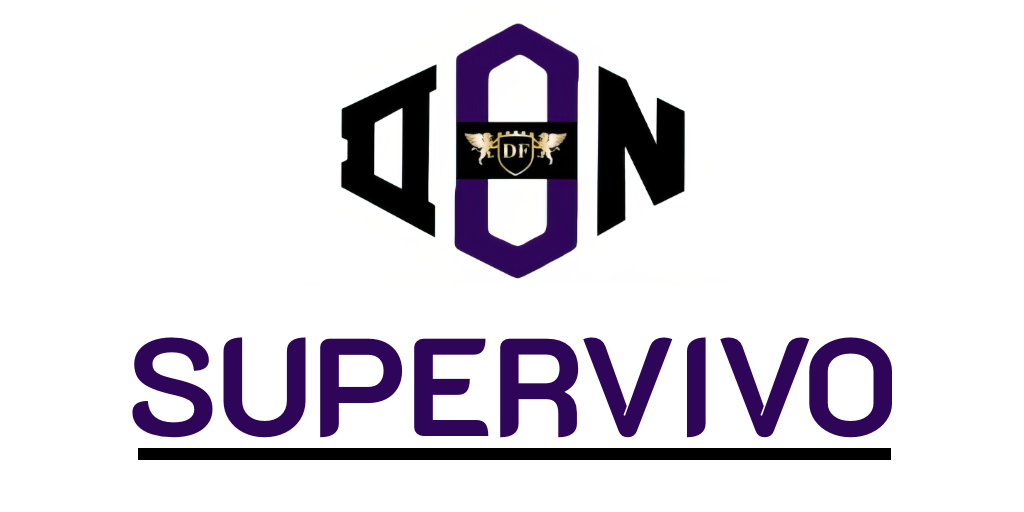In the burgeoning landscape of IT support UK, businesses face the critical question: Is your helpdesk solving problems or just firefighting? An effective helpdesk is essential for ensuring smooth operations, particularly as companies navigate digital transformation. The importance of proactive IT strategies cannot be overstated, as they facilitate not only immediate crisis resolution but also long-term solutions that elevate overall business IT solutions. By partnering with managed IT services like microbyte.com, organisations can empower their helpdesk teams to transition from reactive firefighting to strategic problem-solving, fostering innovation and enhancing user satisfaction.
Understanding the Role of a Helpdesk
A helpdesk serves as a vital component in the overall framework of IT support. Its primary objective is to facilitate communication between users and IT professionals, ensuring that technical issues are addressed promptly and efficiently. In exploring the question, What is a Helpdesk, one uncovers the numerous functions it serves, from managing incidents to fulfilling requests and ensuring service availability.
What is a Helpdesk?
A helpdesk is a centralised point for managing and addressing user issues within an organisation. It plays a pivotal role in providing SME IT support, optimising processes and enhancing efficiency. By incorporating structured IT management and effective IT strategy, it helps businesses navigate the complexities of technology, fostering a seamless experience for users.
Importance of Helpdesk in Business IT Solutions
Implementing a well-structured helpdesk system maximises productivity and streamlines operations, particularly within small and medium enterprises. The deployment of managed IT services enables organisations to scale and adapt quickly to changing demands. A robust helpdesk not only resolves technical difficulties but also contributes significantly to strategic planning by informing IT management decisions. As businesses continue to evolve, a reliable helpdesk remains essential for maintaining operational integrity.
Identifying Firefighting vs. Problem Solving
The distinction between firefighting IT support and effective problem-solving can be critical for businesses aiming to optimise their IT operations. Recognising the signs of firefighting is the first step towards ensuring that your helpdesk provides the value your organisation needs. When support teams are merely responding to issues without implementing lasting solutions, the impact can be profound.
Signs Your Helpdesk is Only Firefighting
Several tell-tale signs indicate that your helpdesk has fallen into a cycle of firefighting rather than engaging in proactive IT solutions. Consider the following:
- Frequent recurring issues that haven’t been resolved.
- High levels of user dissatisfaction and frustration.
- Lack of systematic approaches to common problems.
- Overwhelmed helpdesk staff struggling to keep up with the volume of support requests.
These signs contribute to helpdesk inefficiency, causing delays in addressing user concerns, which may escalate into larger problems if not dealt with promptly.
The Cost of Reactive IT Support
Engaging in reactive IT support comes with significant costs that often go unrecognised. The costs of reactive support can include:
- Lost productivity due to system downtime.
- Excessive time spent on troubleshooting recurring problems.
- Resource drain as helpdesk teams are stretched thin.
These challenges highlight the importance of transitioning to proactive IT strategies, which not only mitigate risks but also enhance overall user satisfaction. By investing in a proactive approach, organisations can reduce helpdesk inefficiency and better allocate resources for tackling complex issues effectively.
Is your helpdesk solving problems or just firefighting?
Transitioning from a reactive approach to effective problem solving within helpdesks can have transformative benefits for organisations. Real-world case studies highlight how businesses have shifted from firefighting to proactive strategies, ultimately leading to improved user satisfaction and operational efficiency.
Case Studies of Effective Problem Solving
One notable example involves a mid-sized financial services company that collaborated with a managed IT services provider to refine their helpdesk processes. Initially, their support team struggled with recurring issues. Frequent interruptions in service led to discontent among users. By partnering with an IT partner focused on business IT solutions, the team established a framework for effective problem solving. This included implementing a ticketing system that prioritised issues based on impact.
Another case sheds light on a retail chain that faced significant IT challenges during peak shopping seasons. Their helpdesk often reverted to firefighting, leading to longer resolution times and frustrated customers. After adopting proactive monitoring solutions as part of their managed IT services, they experienced a notable reduction in emergency support requests. With fewer crises, helpdesk staff could dedicate time to identifying and resolving root causes, enhancing their overall service quality.
These instances underscore the importance of shifting towards effective problem solving. The incorporation of structured methods and collaborative approaches not only alleviated stress on support teams but also allowed businesses to anticipate future challenges. By investing in effective problem-solving strategies, organisations set a foundation for continuous improvement and higher user satisfaction.
The Benefits of Proactive IT Support
Proactive IT support offers numerous advantages that can significantly transform how businesses operate. By anticipating and addressing issues before they escalate, organisations can enjoy improved efficiency and productivity. This proactive approach not only resolves potential problems but also leads to an enhanced user experience, fostering a more stable and reliable IT environment.
How Proactivity Enhances User Experience
A proactive support system actively monitors networks and systems, allowing for immediate identification of vulnerabilities or potential disruptions. This foresight helps maintain seamless operations, essential for providing an enhanced user experience. Employees can focus on their tasks without the frustration of unexpected IT failures, resulting in higher morale and productivity.
Managed IT Services as a Solution
Utilising managed IT services can be a strategic move for businesses aiming to streamline their IT operations. Service providers offer cloud IT services that are tailored to meet specific organisational needs. These services ensure that IT infrastructure remains robust and efficient while allowing internal teams to focus on core business objectives. Companies like Microbyte exemplify how businesses can leverage expert support in transitioning to a proactive model.
Types of Support Offered by Helpdesks
The landscape of IT support has evolved to meet the diverse needs of businesses. Support offered by helpdesks can take various forms, ensuring all potential challenges are addressed efficiently. Among these offerings, 24/7 helpdesk services stand out as a necessity in today’s fast-paced environment. These services facilitate uninterrupted assistance, allowing users to access help whenever they encounter issues.
24/7 Helpdesk Services
Businesses increasingly rely on 24/7 helpdesk services to maintain operational continuity. This always-on support safeguards productivity by providing immediate solutions to problems, regardless of the hour. With such services in place, organisations can mitigate downtime and enhance overall user satisfaction. Clients benefit from having their requests responded to swiftly, preventing minor issues from escalating into significant obstacles.
Specialised Support, including Microsoft 365 and VoIP Solutions
Specialised helpdesk support is essential in addressing the unique challenges that specific technologies present. For instance, Microsoft 365 support ensures that users can maximise the potential of this vital platform. In-depth knowledge of its features allows support staff to assist effectively with everything from collaborative tools to security settings. Furthermore, VoIP solutions have surged in popularity, creating a demand for specialised support that understands telecommunication intricacies. Adept guidance in setting up and troubleshooting VoIP systems enhances communication within organisations, leading to improved workflows.
How to Elevate Your Helpdesk Performance
Many businesses strive for excellence in their helpdesk operations. Elevating helpdesk performance requires a focus on best practices and strategic initiatives. Integrating robust IT management strategies can facilitate improved service delivery. Collaboration with a reliable IT partner can bolster growth, ensuring that both technology and service meet evolving business needs.
Implementing IT Management Strategies
Effective IT management strategies serve as the backbone for a proficient helpdesk. Engaging in regular staff training empowers employees with the skills necessary to handle complex issues efficiently. Utilising the latest technologies enables teams to provide timely resolutions, enhancing overall user satisfaction. Key elements of successful strategies include:
- Streamlining workflows to minimise delays in service.
- Establishing clear communication channels between helpdesk staff and end-users.
- Regularly measuring performance metrics to identify areas for improvement.
Collaborating with an IT Partner for Growth
An effective IT partner can significantly enhance your helpdesk’s capabilities. Leveraging an expert’s insight in IT support UK can lead to innovative solutions tailored to your organisation’s specific challenges. Such partnerships provide access to cutting-edge technologies and best practices, allowing for:
- Continuous improvement in service delivery processes.
- Proactive maintenance to prevent issues before they arise.
- Access to specialised knowledge in emerging technologies and trends.
Transforming Your Helpdesk: Steps to Take
To embark on the journey of transforming your helpdesk from a reactive entity to a proactive powerhouse, it is essential to start with a comprehensive audit of your current practices. This audit should evaluate existing workflows, response times, and customer satisfaction levels. By identifying the pain points within your organisation, you can create a tailored plan of action that outlines specific steps to improvement, setting a solid foundation for effective IT support.
Following the audit, the incorporation of modern IT management tools can drastically enhance your helpdesk operations. Solutions such as automation software, ticketing systems, and performance analytics play a crucial role in streamlining processes and providing insights into areas that require focus. Leveraging these technologies enables your helpdesk team to anticipate issues and respond more efficiently, thus fostering an environment that prioritises proactive solutions.
Lastly, embracing change management strategies is vital for ensuring a successful transformation of your helpdesk. Fostering an organisational culture that welcomes innovation and improvement will empower your team to adapt and evolve with the dynamic landscape of IT support. By promoting continuous learning and development, your helpdesk can rise to meet the evolving demands of modern business IT solutions, ultimately leading to improved customer satisfaction and operational effectiveness.










